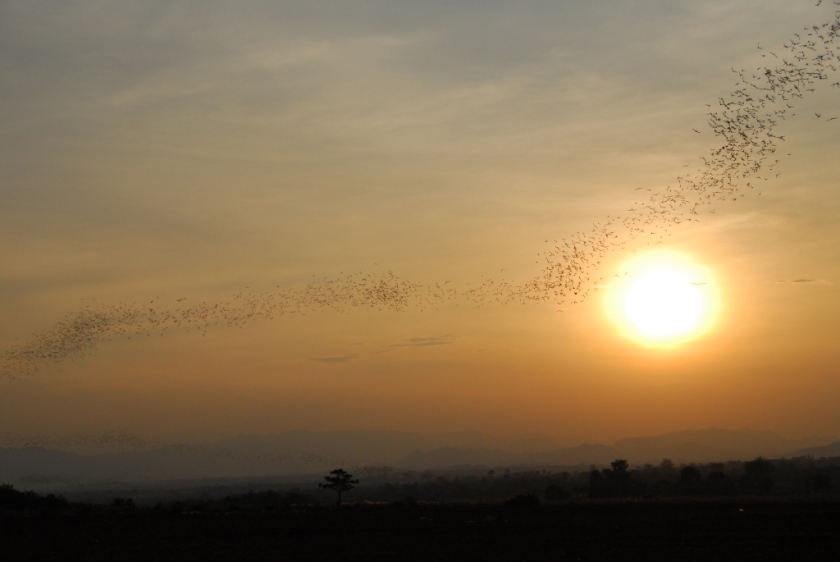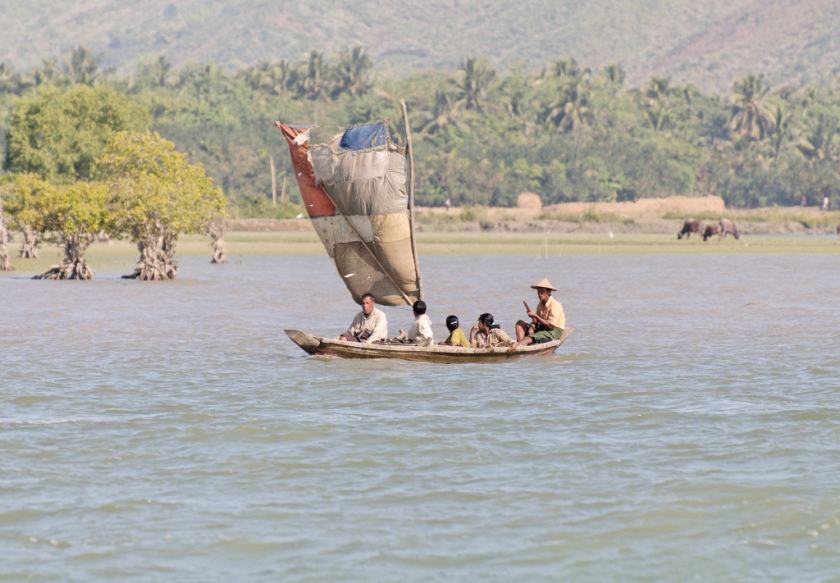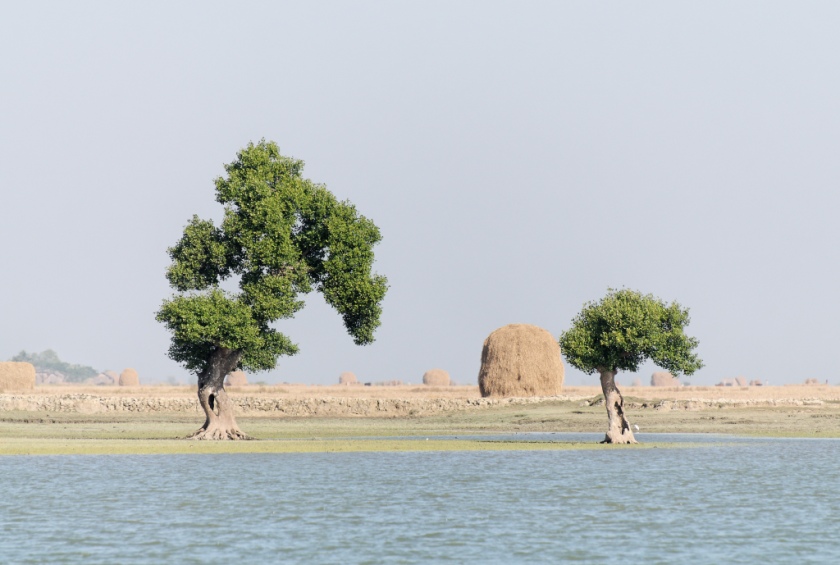Gabe had seen places, either accompanied by a friend or alone, that were magic. All the hardships of individual travel had been amply rewarded as he stood with the driver and guide and watched while millions of wrinkle-lipped bats flew from a cave on a hill in central Thailand.  It was dusk when the car came to a stop on a plain with no one in sight, the sun a bright red disk sailing below the horizon. Gabe got out of the car just as the first bats emerged from the cave.
It was dusk when the car came to a stop on a plain with no one in sight, the sun a bright red disk sailing below the horizon. Gabe got out of the car just as the first bats emerged from the cave.  These were followed by more, and more, and more, an impossible number of flying mammals swooping and looping in ribbons across the skies.
These were followed by more, and more, and more, an impossible number of flying mammals swooping and looping in ribbons across the skies. “Each bat will cover up to 200 kilometers of hunting grounds tonight before they’re done,” the guide told him.
“Each bat will cover up to 200 kilometers of hunting grounds tonight before they’re done,” the guide told him.
Gabe heard them calling to one another, the rustle of millions of wings unlike anything he’d ever experienced. His view across the plain was filled with the streams of flying creatures dark against the crimson of the deepening night sky. 
 There was not a single other human being anywhere, no buildings, no roads, no signs of human civilization, only the twisting spirals of the bat colony in the air.
There was not a single other human being anywhere, no buildings, no roads, no signs of human civilization, only the twisting spirals of the bat colony in the air.  The men stood for over two hours as the bats sailed overhead. Gabe waited until it was too dark to make out the shapes of the bats before he turned away, images of flight burned onto his retinas and his memory.
The men stood for over two hours as the bats sailed overhead. Gabe waited until it was too dark to make out the shapes of the bats before he turned away, images of flight burned onto his retinas and his memory.
– from my short story “Waiting” in Broken In: A Novel in Stories. Available online at amazon.com, amazon.de, and amazon in countries everywhere.
Go to my post Death On A Wet Road Between Towns Without Names for more of Gabe’s travels.
(All photogaphs can be enlarged by simply clicking on the image.)
















